Euphorbia trihedral, it is also triangular, is a representative of the Euphorbia family and grows in the wild in the subtropical climate of America and Africa. In indoor floriculture, stem succulent, resembling a candelabrum in adulthood, is appreciated for the high decorativeness of powerful shoots, which can become an original decoration of any interior.
Material Content:
Description, nuances of growing
Euphorbia cactus trihedral stands out from the species diversity of the genus with trihedral stems covered with red spikes. In an apartment environment, succulent is able to reach a height of 2-3 meters. Leaf plates have a lanceolate, pointed shape. Flowering at home does not occur.

When cultivating triangular milkweed on a windowsill, a number of plant characteristics should be taken into account:
- need for bright lighting;
- poisonous juice;
- the presence of a not pronounced stage of rest;
- neutral attitude to air humidity.
Ideal conditions for milkweed
A houseplant is quite undemanding and durable, but it needs to create an optimal microclimate.
Lighting and location
The photophilous succulent needs a lot of bright light, the level of which will be sufficient when placing the flower on the windowsills of the windows of the southern direction. In summer, it is advisable to transfer the euphorbia to the terrace or balcony.
Soil requirements

For trihedral milkweed, you can purchase a ready-made substrate for succulent plants in a specialized flower shop or prepare the soil mixture yourself from peat, sand, turf and leafy soil in equal parts.
Temperature
In the spring-summer period, euphorbia grows well at room temperatures at 22-30 ° C. With the advent of autumn cold, it is recommended to move the pot to a cooler room with a temperature of 10 ° below, where the flower will be located away from heating appliances.
Humidity
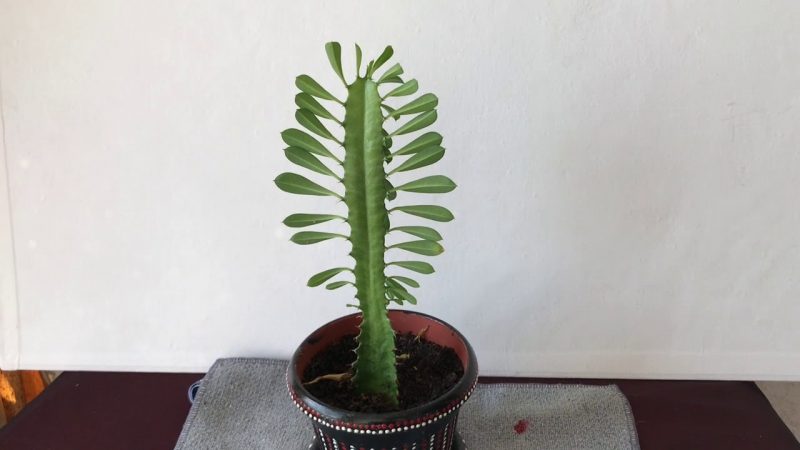
The inhabitant of the subtropics, being a succulent, is indifferent to the level of humidity and does not need to be sprayed. Euphorbia well tolerates dry air. As a hygienic measure to remove dust, it is recommended to clean the leaves using a wet brush.
Care for trihedral milkweed at home
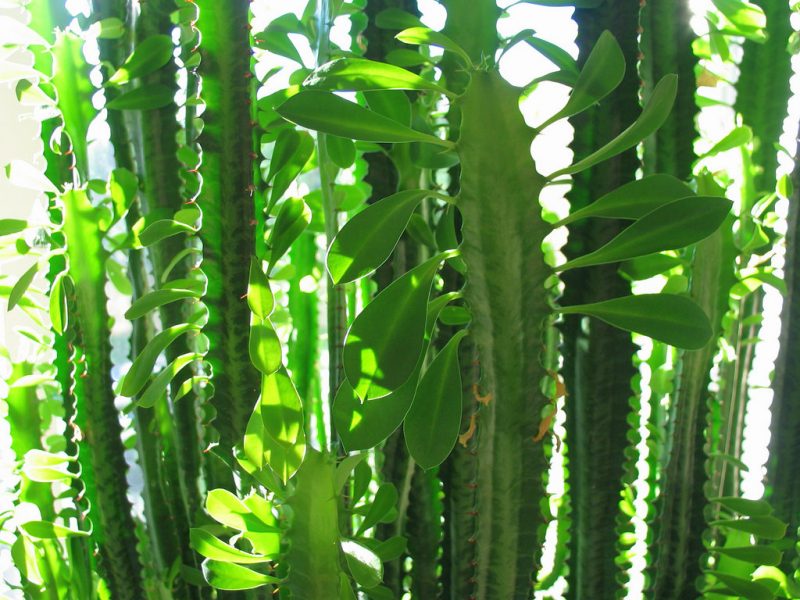
To triangular euphorbia delight others with high qualities of decorativeness, you should properly care for the exotic representative of the flora.
Watering
An exotic flower with an original appearance does not need a lot of water and frequent watering. It is enough for him in the summer heat to receive a portion of water once a week. With the advent of autumn, the interval between procedures increases to two weeks, and in winter - up to a month. An indicator that a need has arisen for the next irrigation is an almost dried earthen lump.
Fertilizer and fertilizer
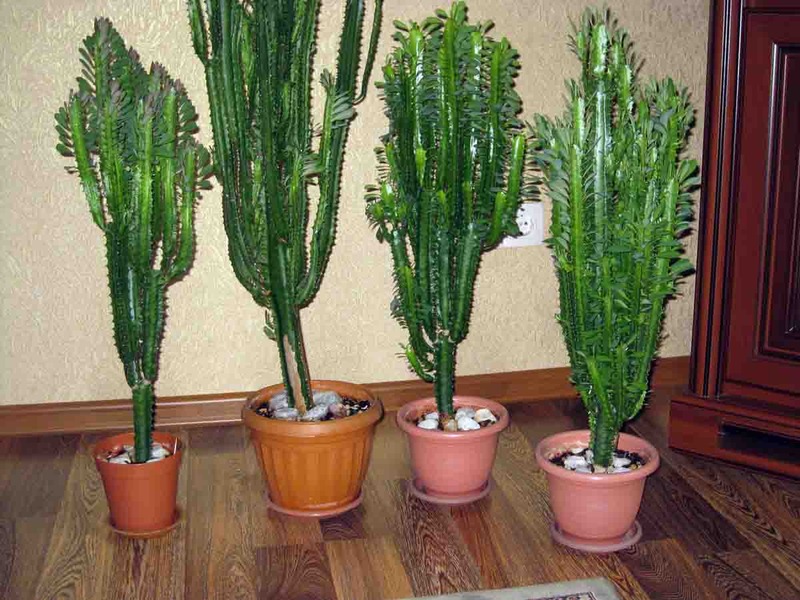
In the growing season, falling in spring-summer, euphorbia is fed twice a week with liquid complex fertilizers for cacti or succulents. With the advent of cold weather, the frequency of top dressing decreases and completely stops for the winter period.
Transfer
Young specimens are transplanted annually, but as they grow, the procedure can be carried out after 2-3 years, when the capacity becomes cramped for the inhabitant.
With a procedure that is carried out in early spring before the start of active growth:
- A larger diameter pot is selected taking into account the surface root system of the plant.
- A drainage layer is placed at the bottom to prevent moisture stagnation.
- By transshipment, the succulent with the old earthen lump is moved to a new container.
- The remaining space is covered with a loose substrate, suitable for trihedral milkweed.
- The soil is compacted and moistened.
Trimming milkweed triangular
The shortening of the elongated shoots makes it possible to preserve the decorative appearance of trihedral euphorbia: a compact appearance is maintained, in which the plant develops even more magnificent and more intense. Before trimming the succulent, the grower must prepare protective gloves and paper towels to help stop the secretion of milky juice.
It is interesting:euphorbia - houseplant
Pest and Disease Control
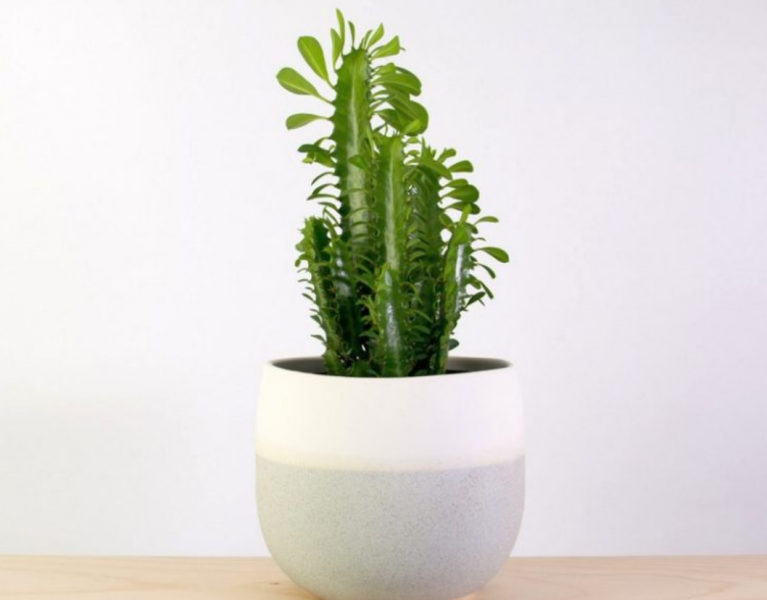
Due to its toxicity, euphorbia is not the favorite food of harmful insects. However, it can sometimes be damaged by a whitefly and scale, which should be combated by treating the succulent with an insecticidal preparation. In case of violation of the irrigation regime and with constant waterlogging on the plant, the development of rot is noted. To save the flower, it is necessary to transplant it into a fresh substrate with the preliminary removal of diseased roots, and also after the transplantation, treat it with a fungicidal preparation.
Plant propagation methods
Milkweed triangular propagated by side cuttings 10-12 cm long, which are harvested in the spring season. Before rooting the euphorbia in a substrate of peat and sand mixed in equal parts, the places of cuts on the cuttings are washed with running water to stop the secretion of milky juice and sprinkled with crushed charcoal.After these manipulations, the cuttings are left for several days in the air to form a protective film. When the planting material is in the ground, the plantings are covered with a film to create greenhouse conditions. In the process of rooting, the cuttings must be systematically moistened and ventilated.
Read also:fittonia at home
What problems can the flower grower face?
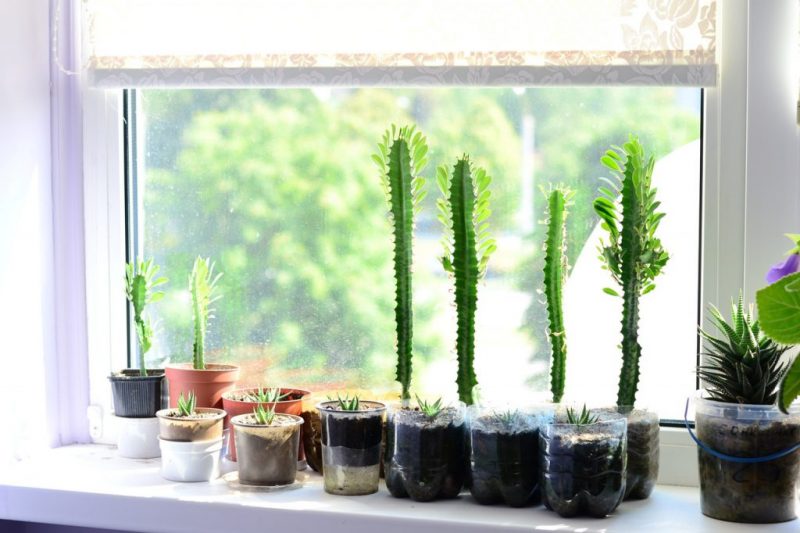
Since the euphorbia trihedral is an extremely undemanding succulent plant, there are practically no problems with its cultivation, with the exception of:
- the appearance of brown spots on the lower part of the stem and leaves, which is caused by the development of rot due to violation of the irrigation regime;
- stretching of stems due to lack of lighting, especially in winter, when natural daylight hours are very short;
- the fast pace of transformation of the inhabitant of the exotic flora into a giant candelabrum, which is due to the too spacious pot and aggressive behavior of the milkweed trihedral when building the root system with a simultaneous increase in green mass.
Signs and superstitions associated with trihedral milkweed
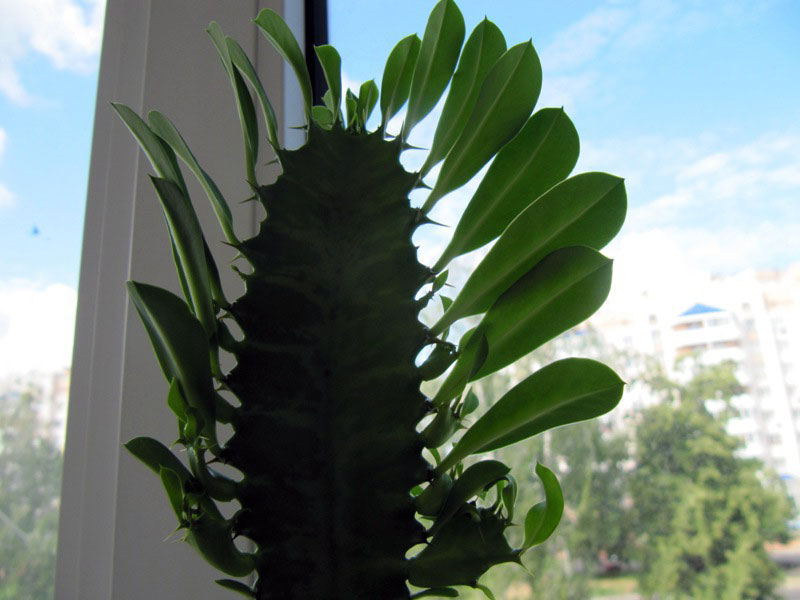
Some signs and superstitions are associated with milkweed trihedral and its maintenance in the house:
- According to Feng Shui experts, the thorns of milkweed trihedral, placed near the main entrance to the house, protect the hearth from negative emotions, gossip and other negative influences from the outside.
- It is also believed that due to the practical impossibility of flowering milkweed trihedral at home, the onset of this phase will mark future luck and financial well-being.
- In contrast to the above points of view, there are adherents of the opinion that plants with thorns bring failure and discord to the house where they grow.
Thus, the triangular euphorbia, which attracts many gardeners with its extraordinary appearance, is quite unpretentious, and if simple rules for care are followed, the owner of an exotic flower will become the happy owner of a green decoration for an apartment or a house.












